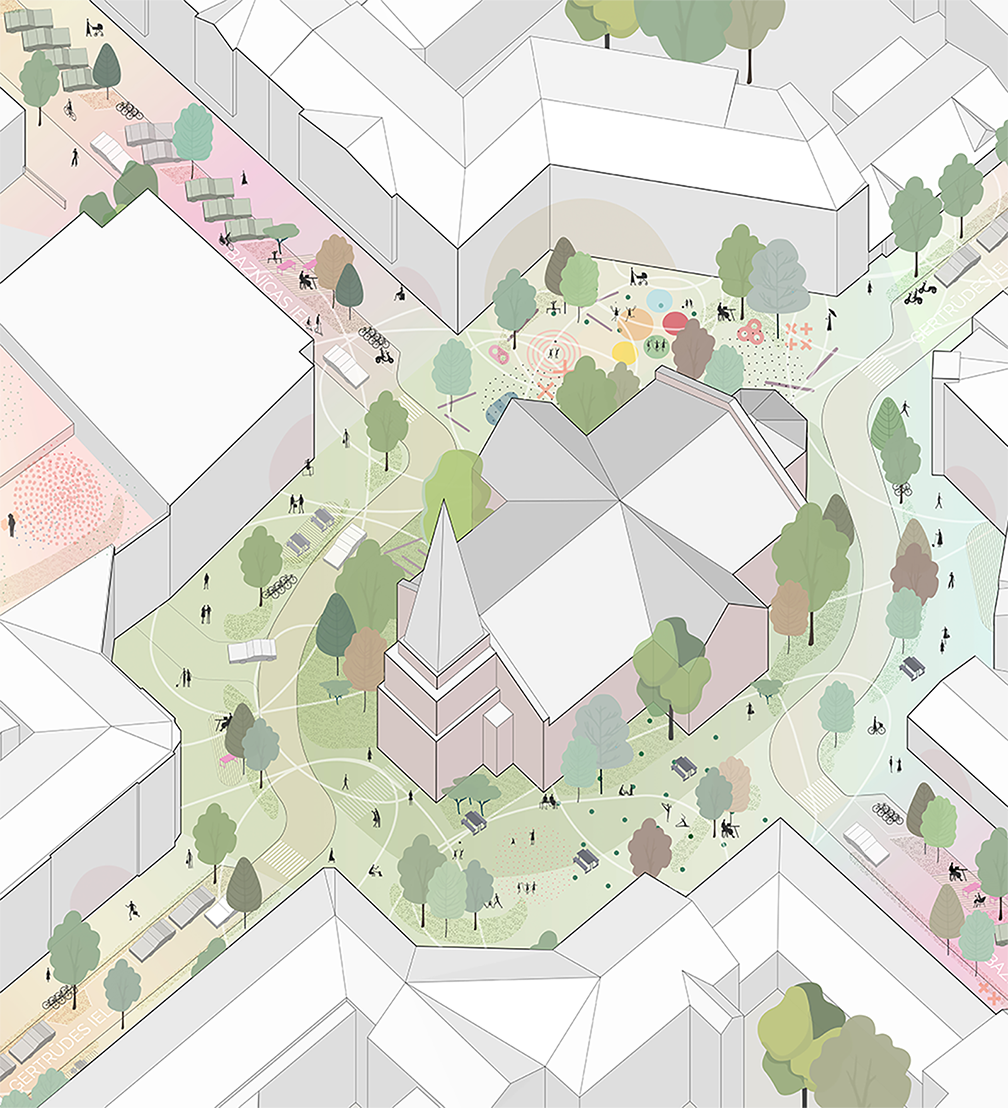
For his master’s thesis at the Amsterdam Academy of Architecture, urbanist Miks Bērziņš has developed a proposal to make the centre of Riga more livable and attractive by filling unused areas with a variety of temporary functions, from cultural events to beekeeping. This solution would allow for immediate changes in the urban environment without waiting for long-term development plans to be implemented.
As Riga’s population declines, the city centre threatens to become an increasingly empty and unattractive place. As more people choose to move to municipalities neighbouring Riga, the urban environment is degrading faster, encouraging more and more people to look elsewhere for a place to live and putting more strain on the city’s infrastructure. Increasing car flows make road maintenance more expensive and air quality worse. As income taxes are drained from the municipality, the city’s prosperity is reduced. With population density declining, communities weaken and public spaces deteriorate.
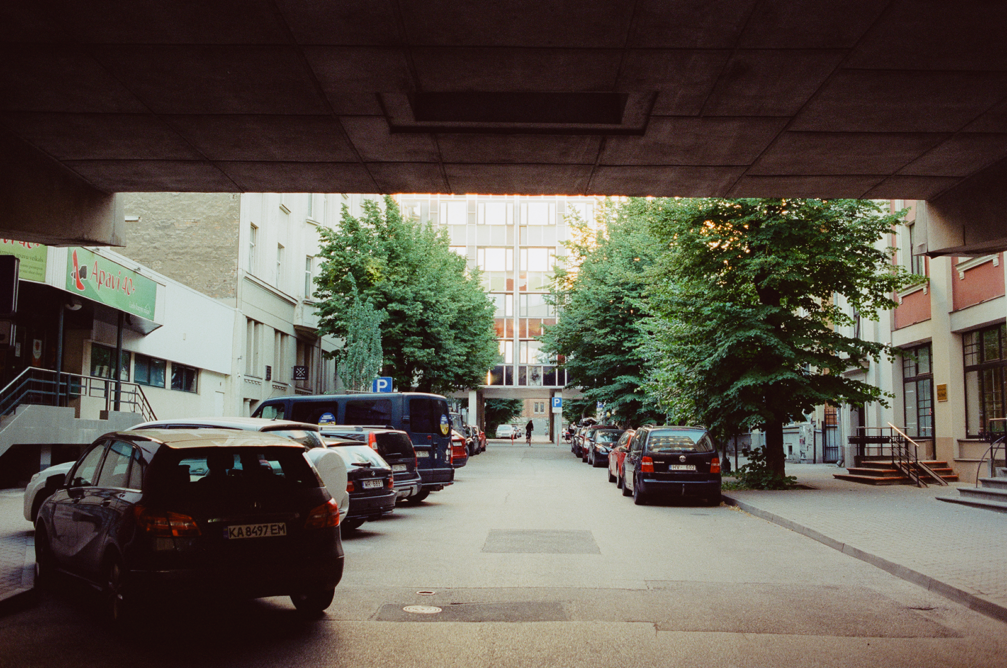
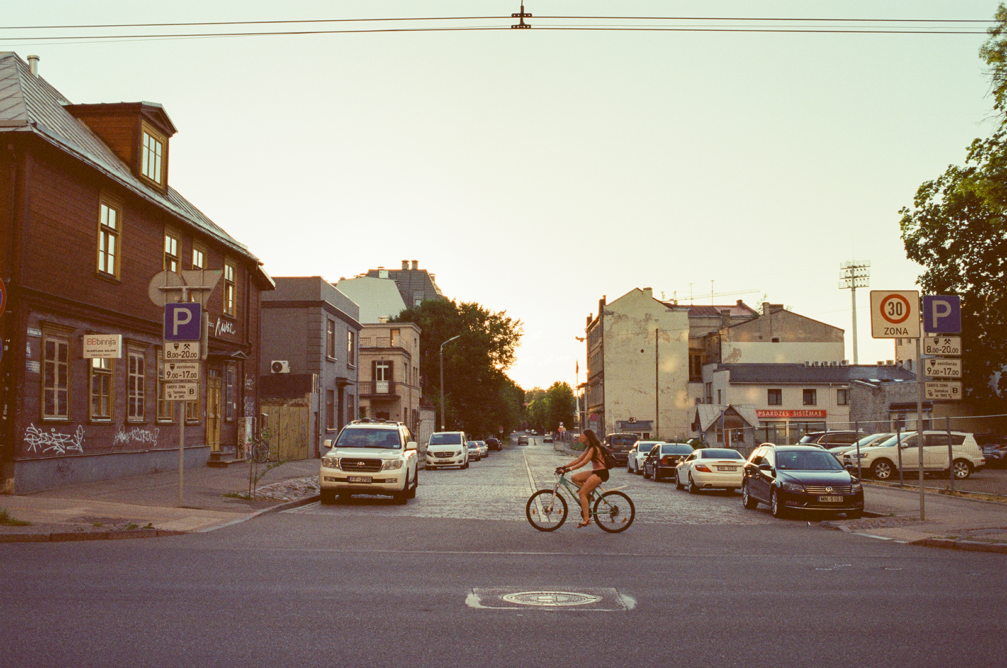
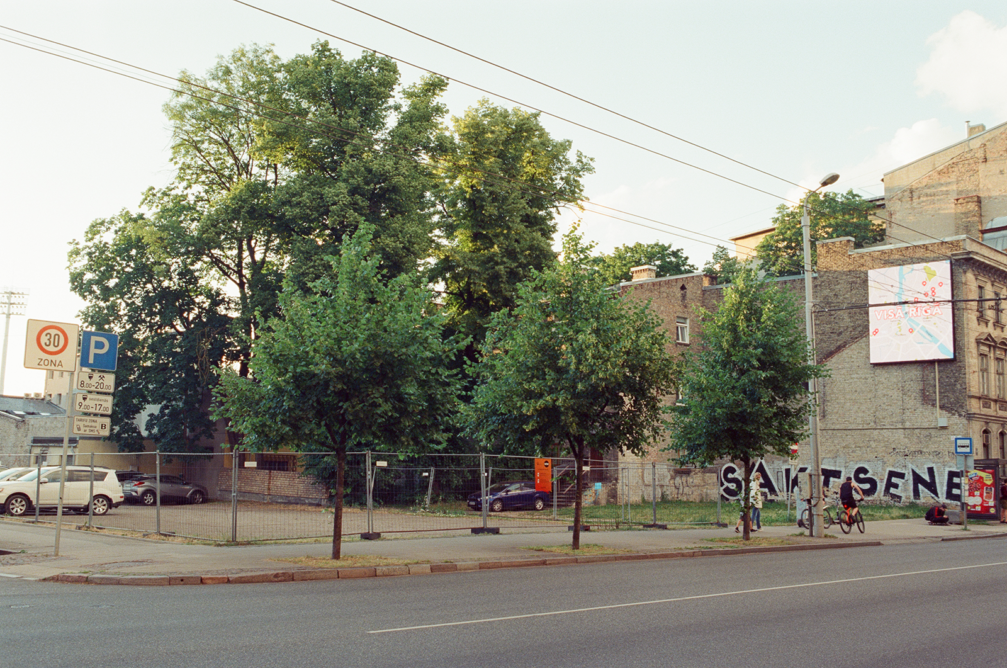
To tackle this problem and make Riga attractive to residents, Miks Bērziņš proposes turning the city’s empty and degraded areas into public spaces. For his thesis, he identified and mapped unused areas in the city, concluding that they often remain empty for years in the hands of private owners. «Landowners and investors seem to treat the urban fabric of the city like stocks — buying, selling, and using it as a tool for safely holding assets. This leads to stagnation, which, in the long run, gives nothing but degraded spaces to the city,» says Miks.
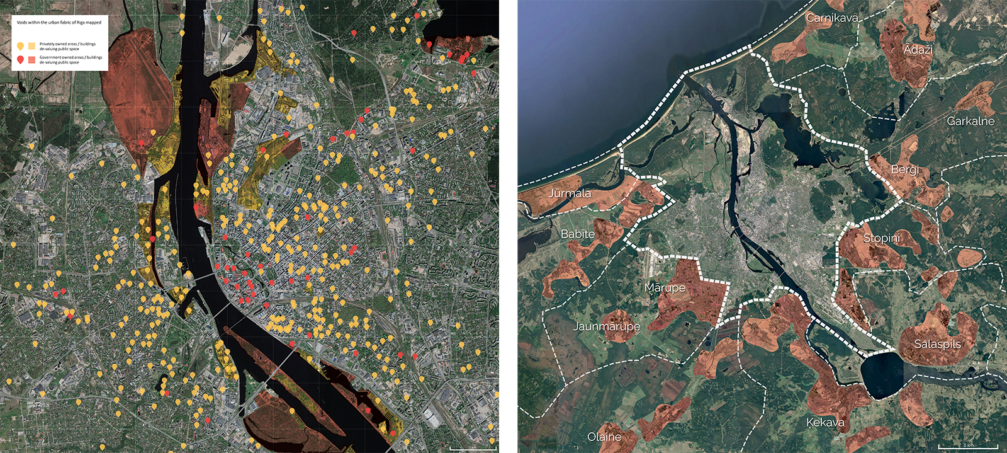
While waiting for development plans to be implemented and changing owners, unused spaces are being ripped out of the urban fabric for years. Miks is convinced that by giving them a temporary public function, Riga could improve its urban environment and quality of life with relatively little investment. «Liveable Riga is walkable, with fewer cars and more space for people and activities. It has permanent temporary spaces — places where we can experiment together to create a city where we really want to live,» says Miks. He notes that there are already several successful projects in Riga where temporary functions have been found for unused areas, such as the Sporta Pils gardens, the Tallinn and Sporta 2 quarters.
To stimulate change, the urban planner has developed a set of solutions for the occupation of unused areas, introducing functions such as playgrounds and sports areas, parks, community gardens, green areas for improving air quality or beekeeping, places for cultural events or shopping, public barbecues, or saunas. For each function, there is a minimum time period for its development on the site, and a potential funder (municipality, landowner, local community, etc.) is determined. Miks points out that all stakeholders can and should play a role in making Riga more livable. With the municipality providing the framework and creating a set of rules, or, on the contrary, making it easier to introduce temporary functions, both private owners and residents could get involved in improving the urban environment.
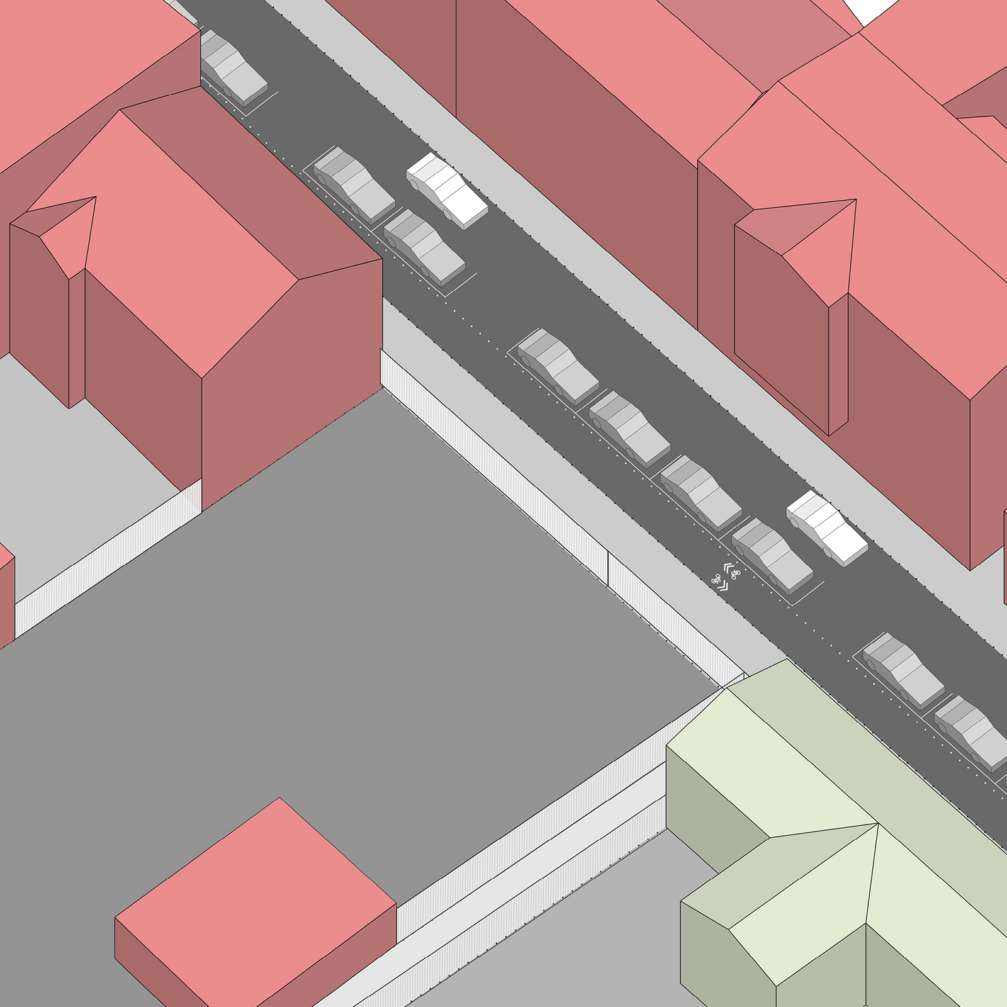
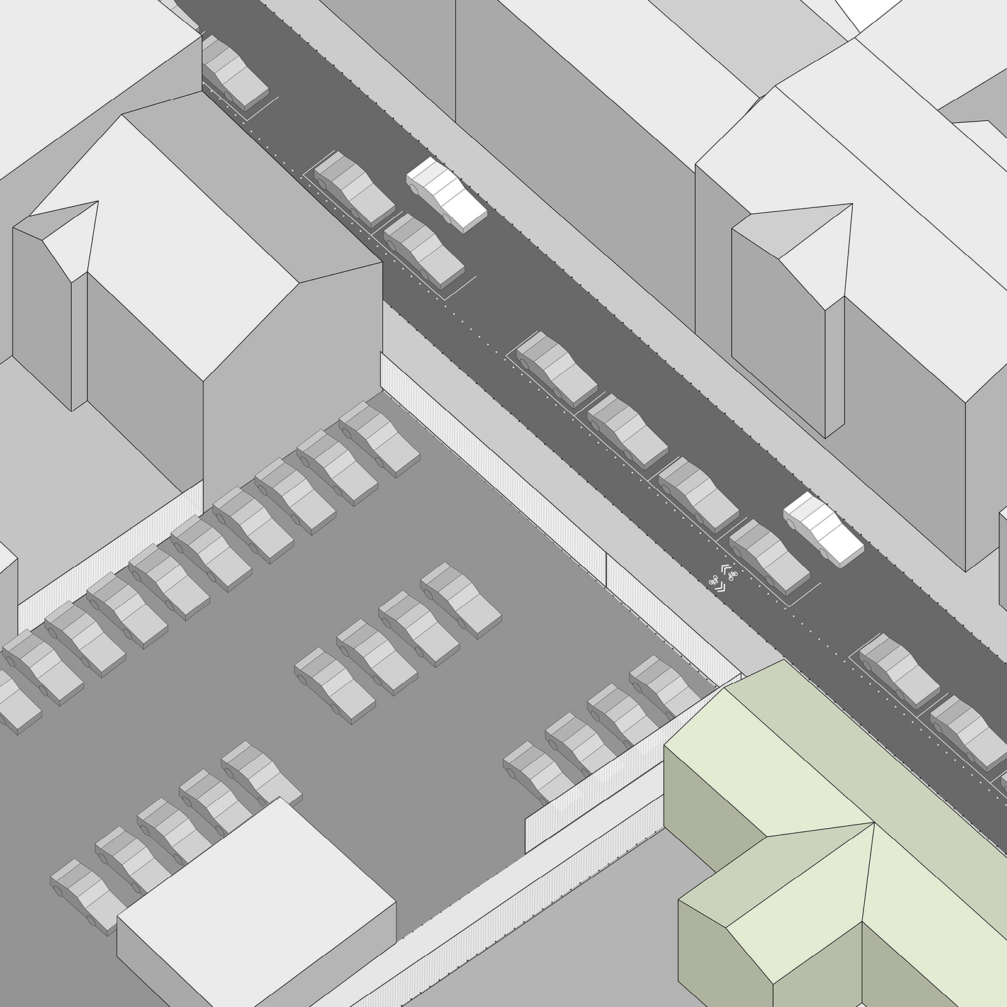
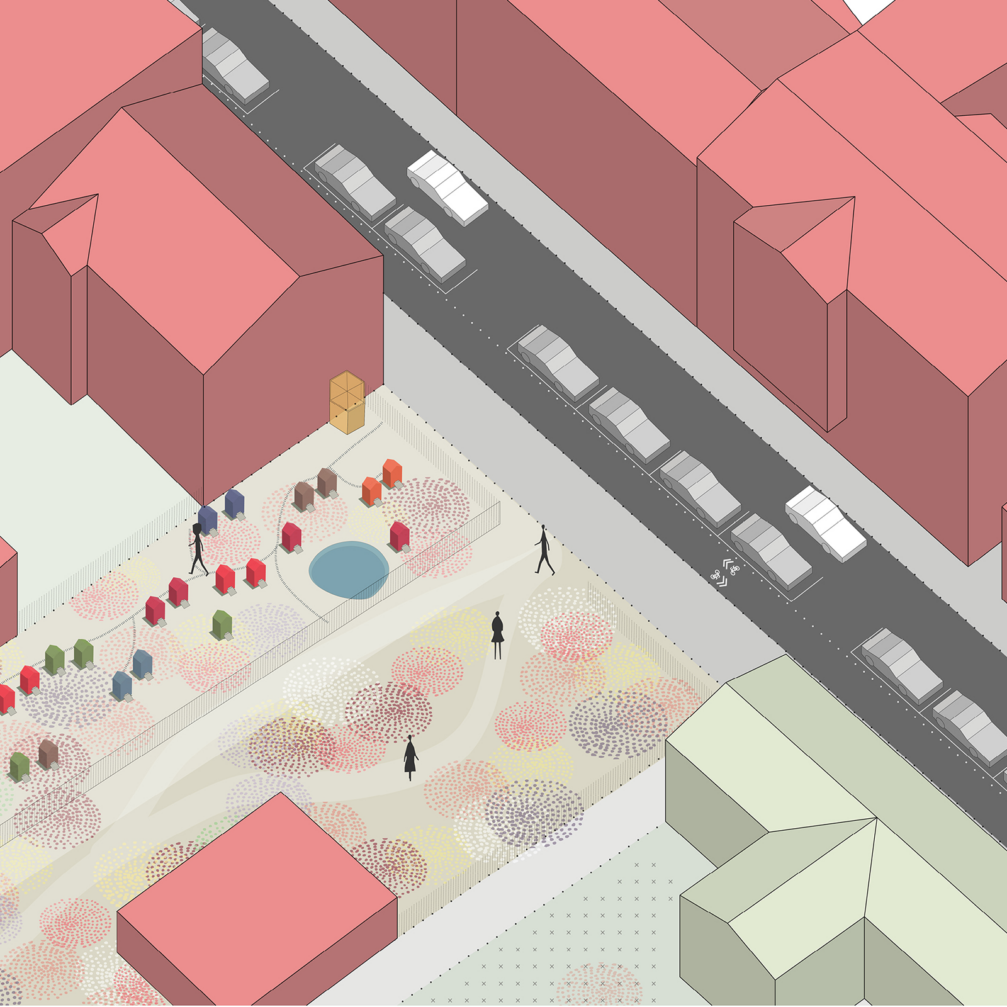
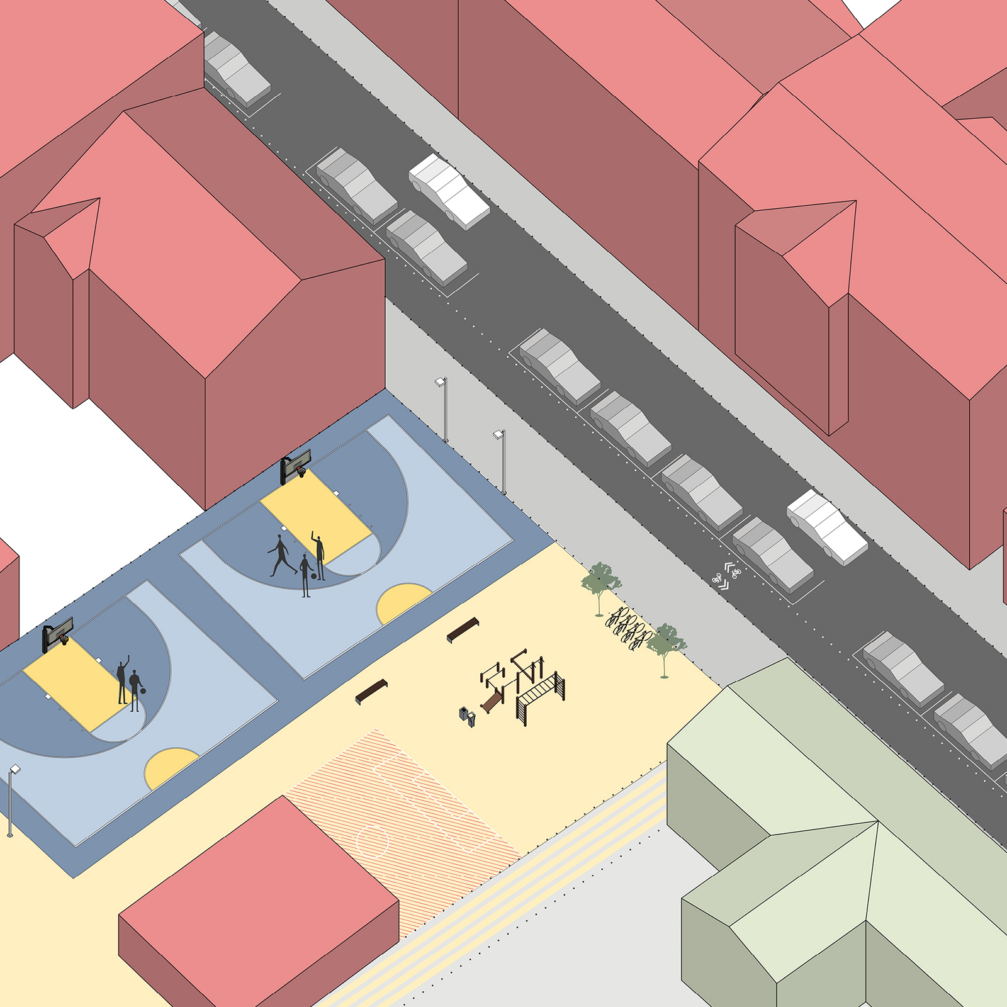
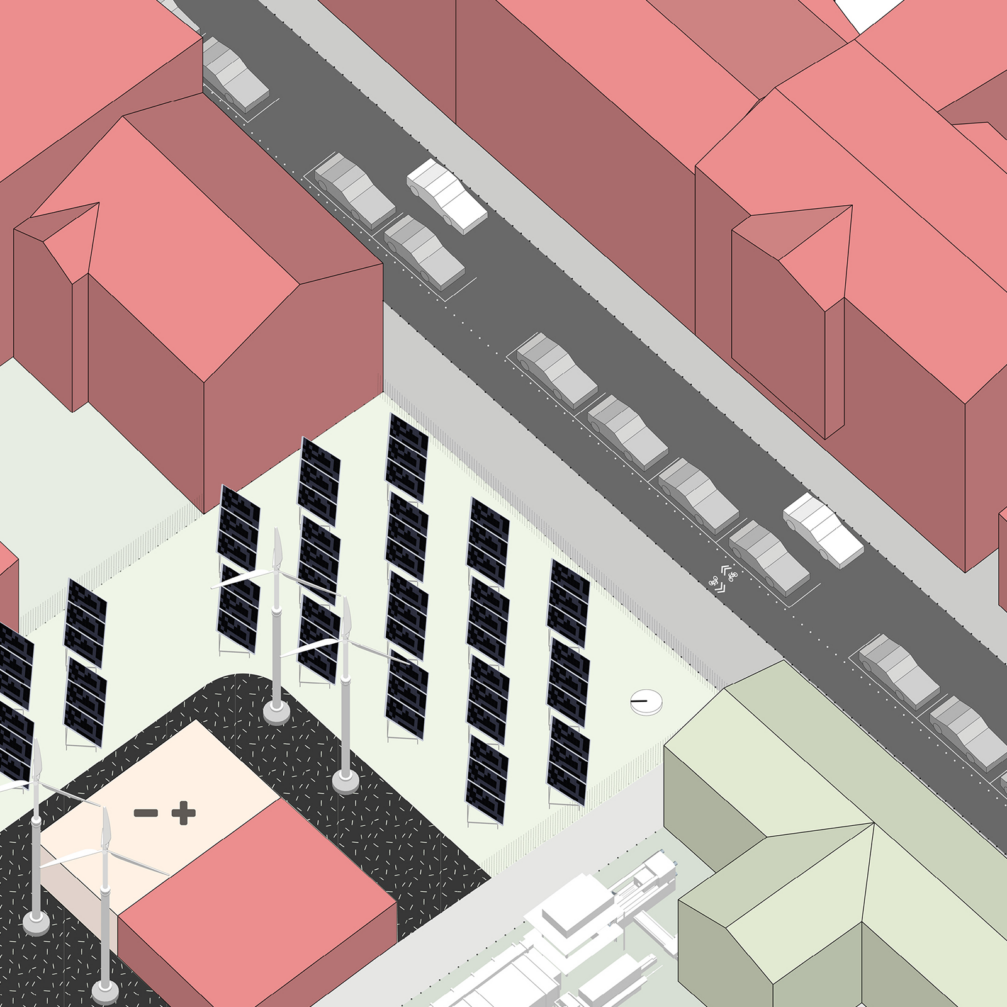
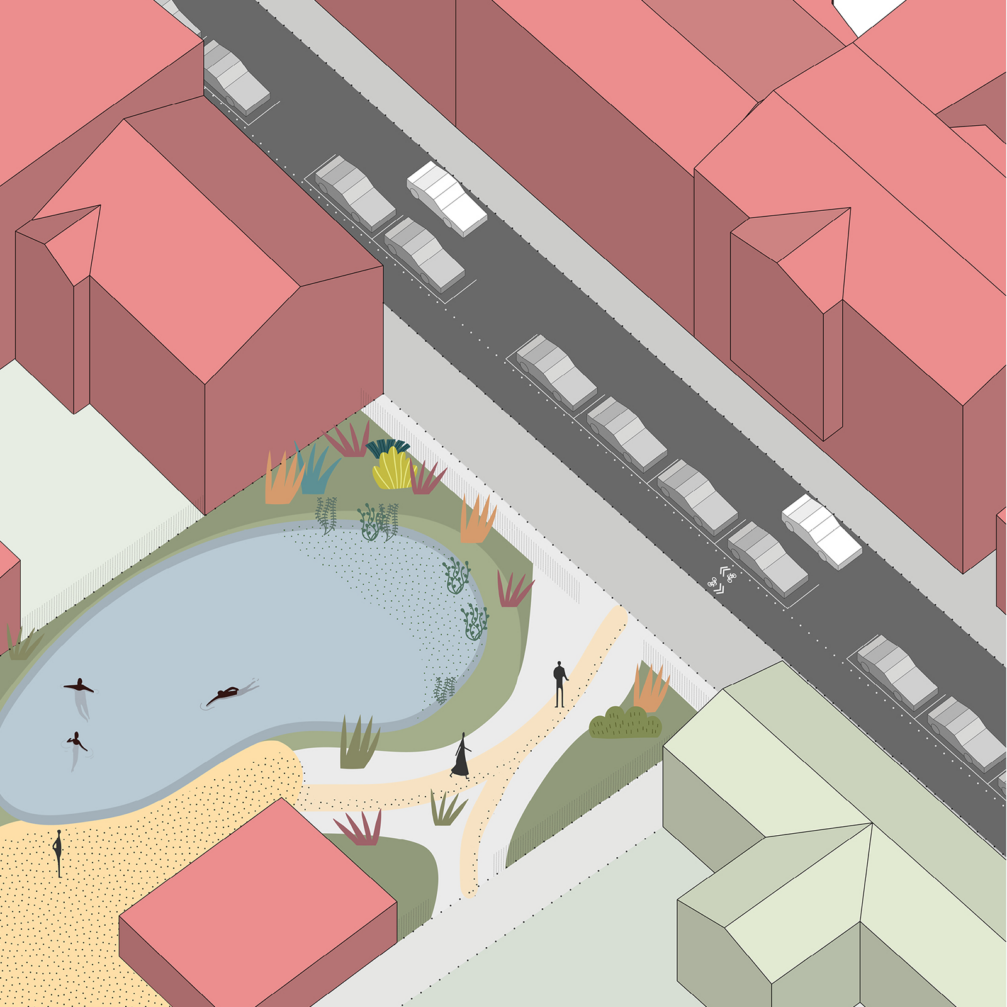
To demonstrate how such solutions could be implemented, Miks developed a vision for the area between Dzirnavu and Bruņieku, Brīvības, Sporta, and Antonijas Streets. In choosing the location, his aim was to create an inspiring proposal in the heart of the city, without touching any of the «hot potatoes» — the city’s main streets where the introduction of change has always provoked fierce public debate. The street network in the area is suitable for traffic calming, and Miks proposes to turn Skolas Street into a cycling street and the beginning of Ģertrūdes Street into a pedestrian street, dedicating the circle around the Old St. Gertrude’s Church to a green area. The project area is also large enough to accommodate the set of temporary solutions developed by Miks in a sensible way, extending and reinforcing the existing ambience and potential of the neighbourhood.
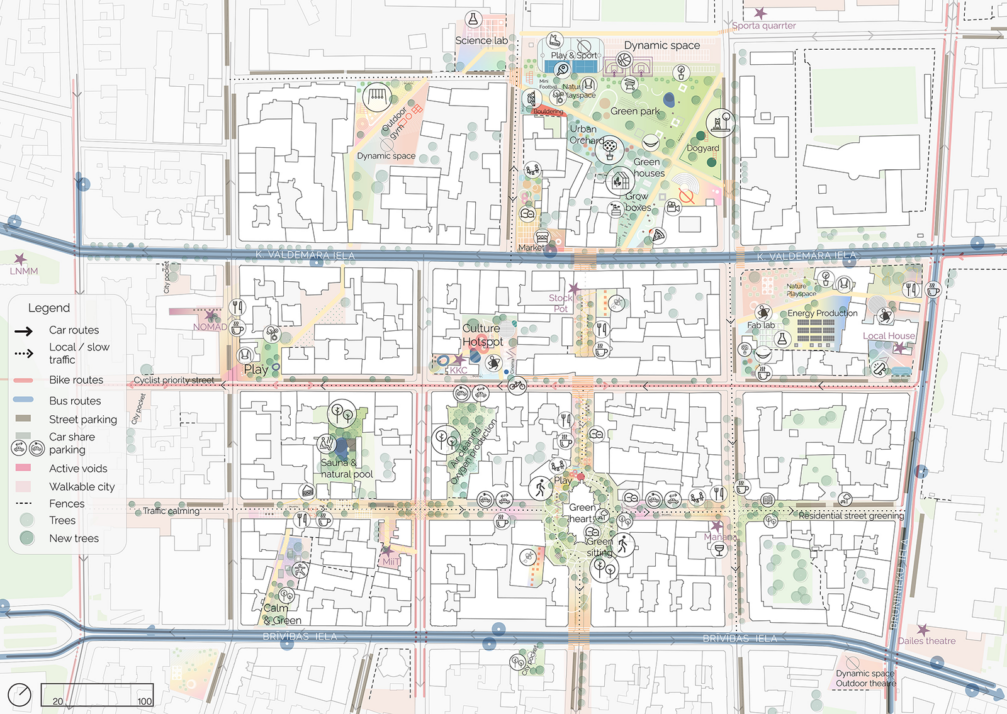
«This project aims to build enthusiasm and explore the possible outcomes of acting now. Instead of waiting for large interventions to take place or before removing cars from the city centre, let’s try making it more livable today. These changes will not happen by themselves. The city must step in and work together with landowners to create livable and diverse neighbourhoods,» urges Miks.
Miks Bērziņš’ graduation project Riga, Livable City was developed as part of his Master’s studies at the Urbanism programme of the Amsterdam Academy of Architecture. Mentors: Herman Zonderland, Toms Kokins, and Viesturs Celmins. More about Riga, Livable City can be found on Miks Bērziņš’s profile on the Amsterdam Academy of Architecture website.
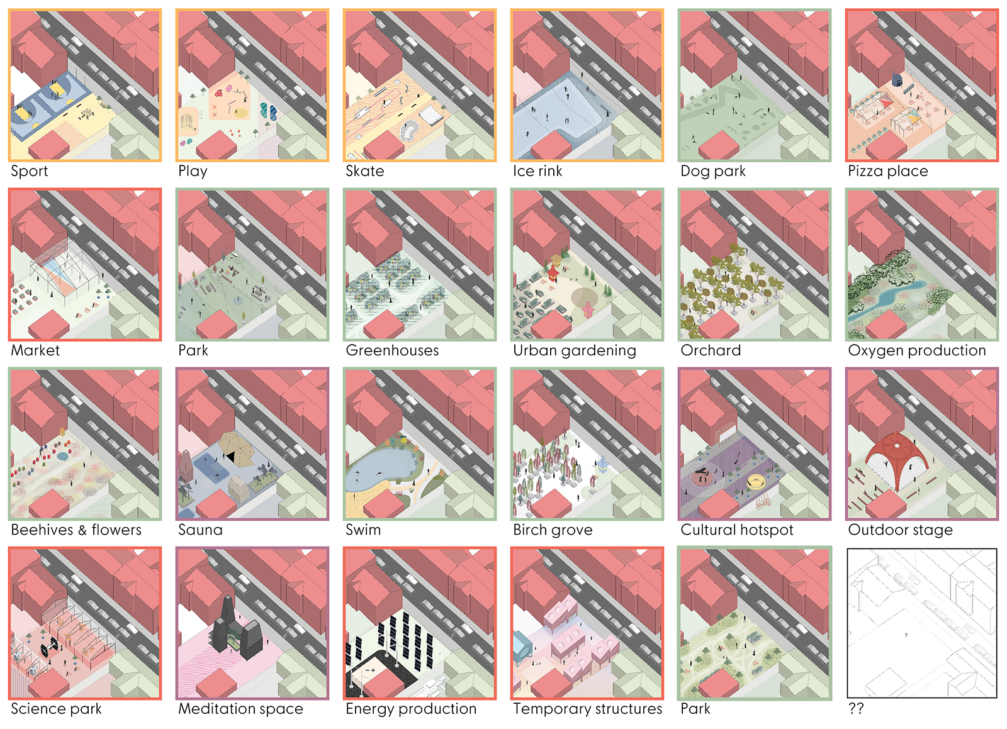
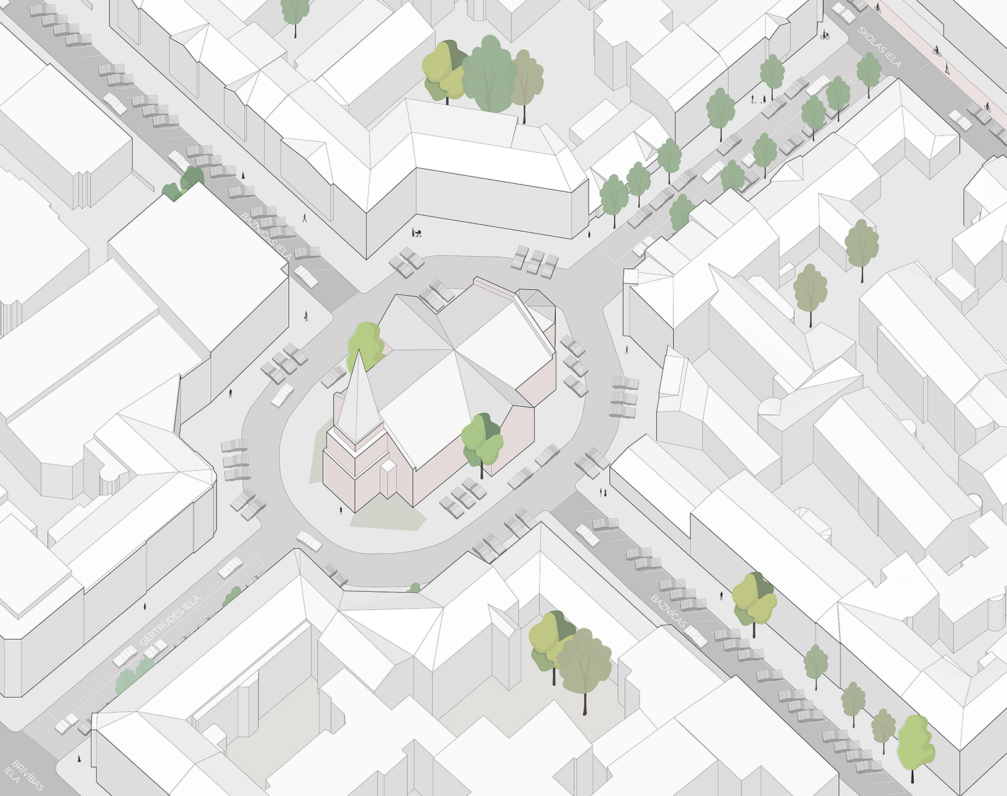
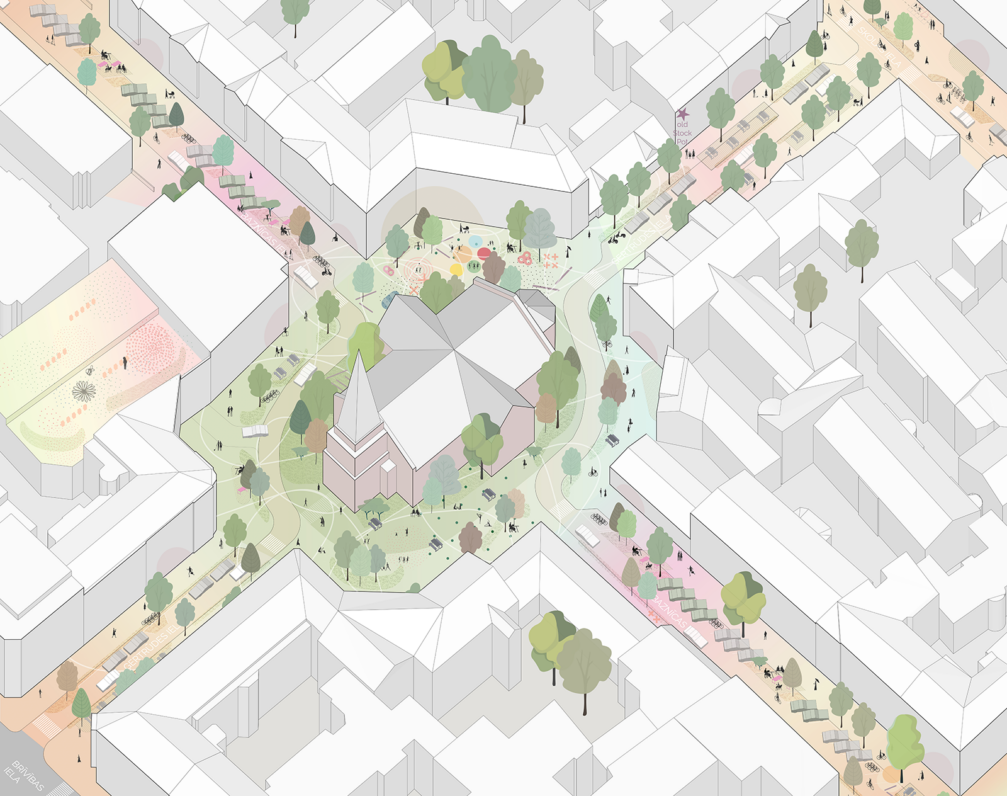
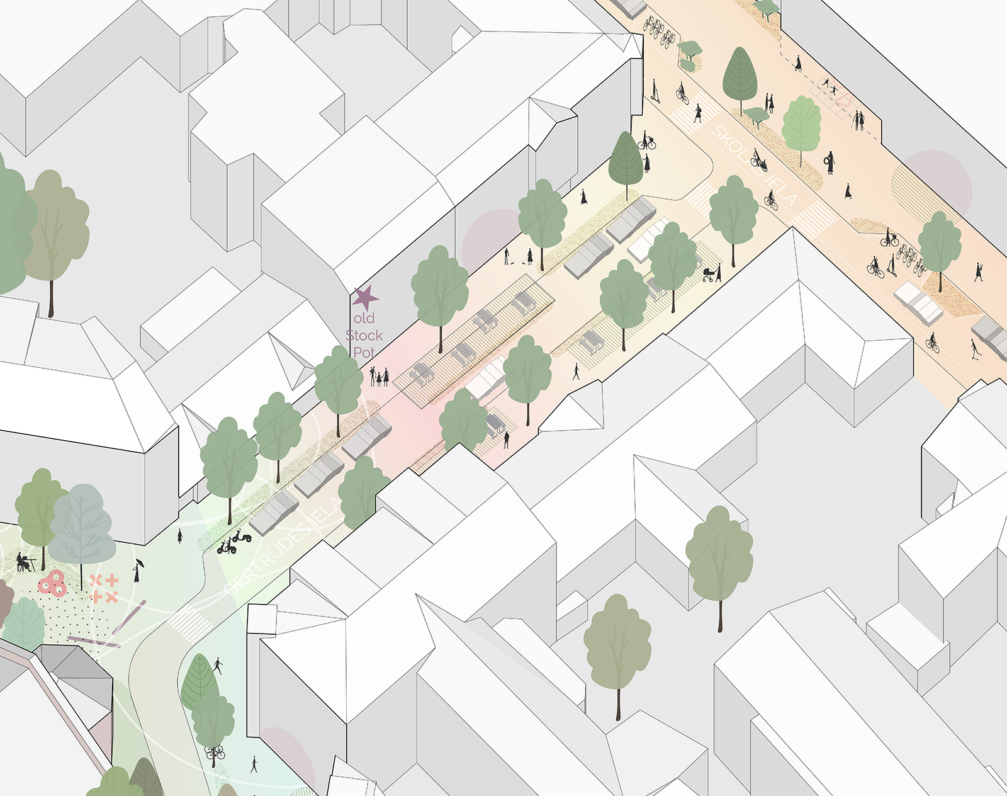
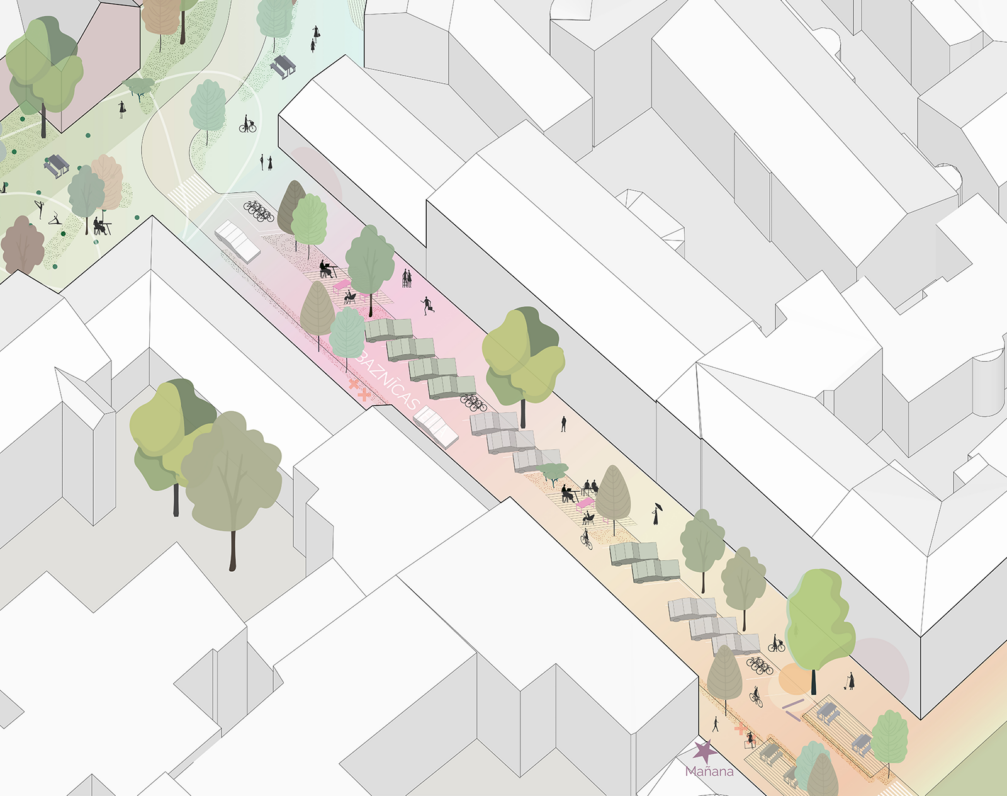
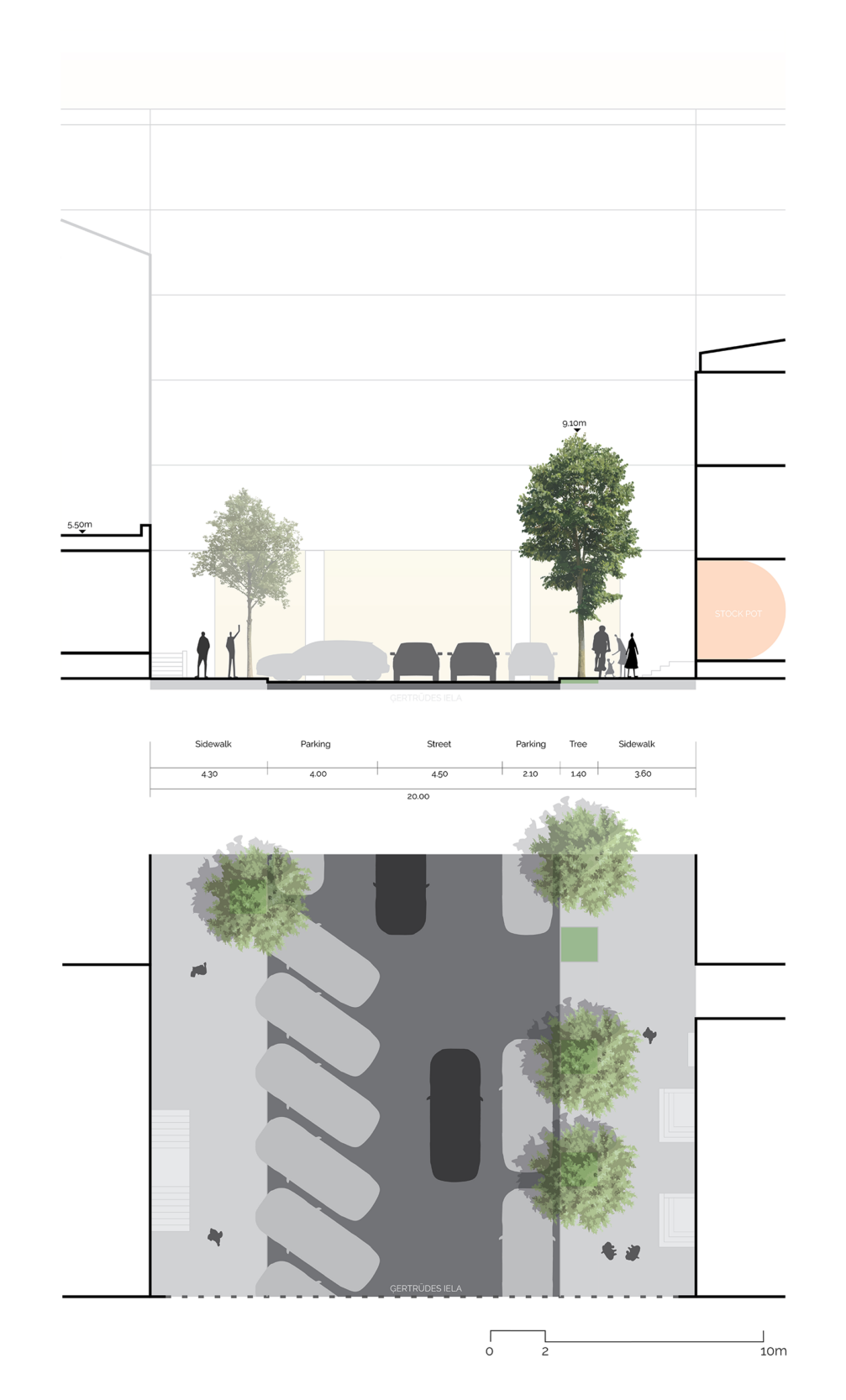
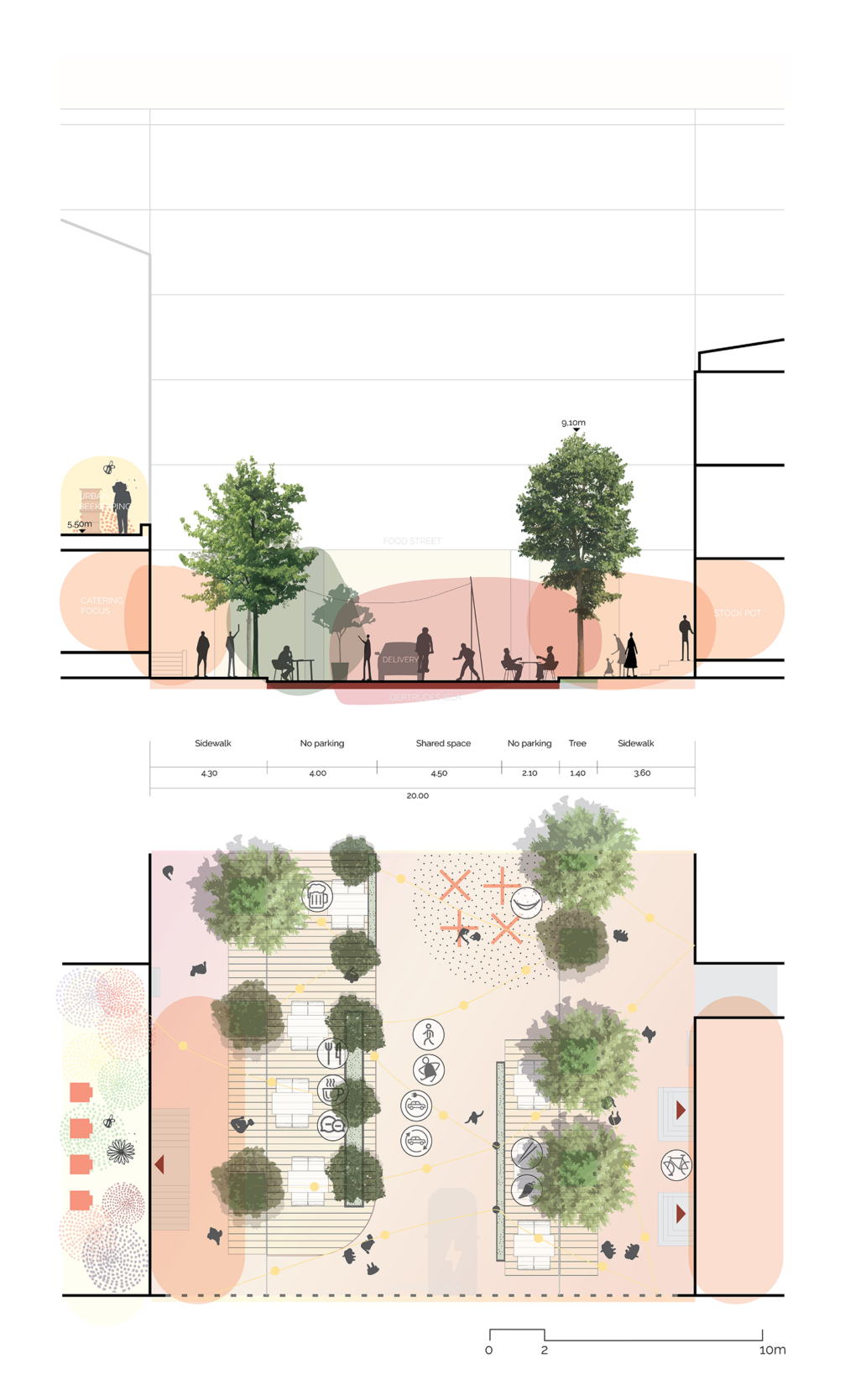
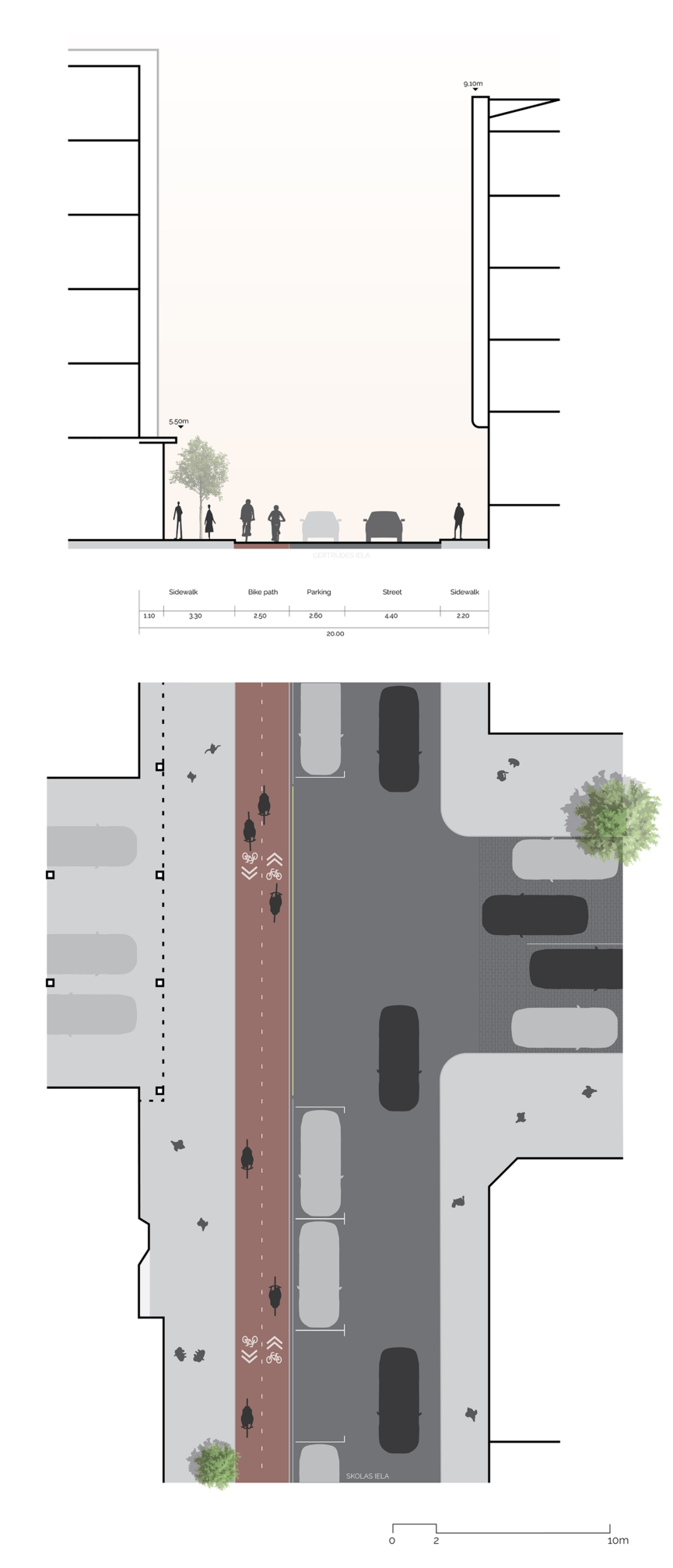
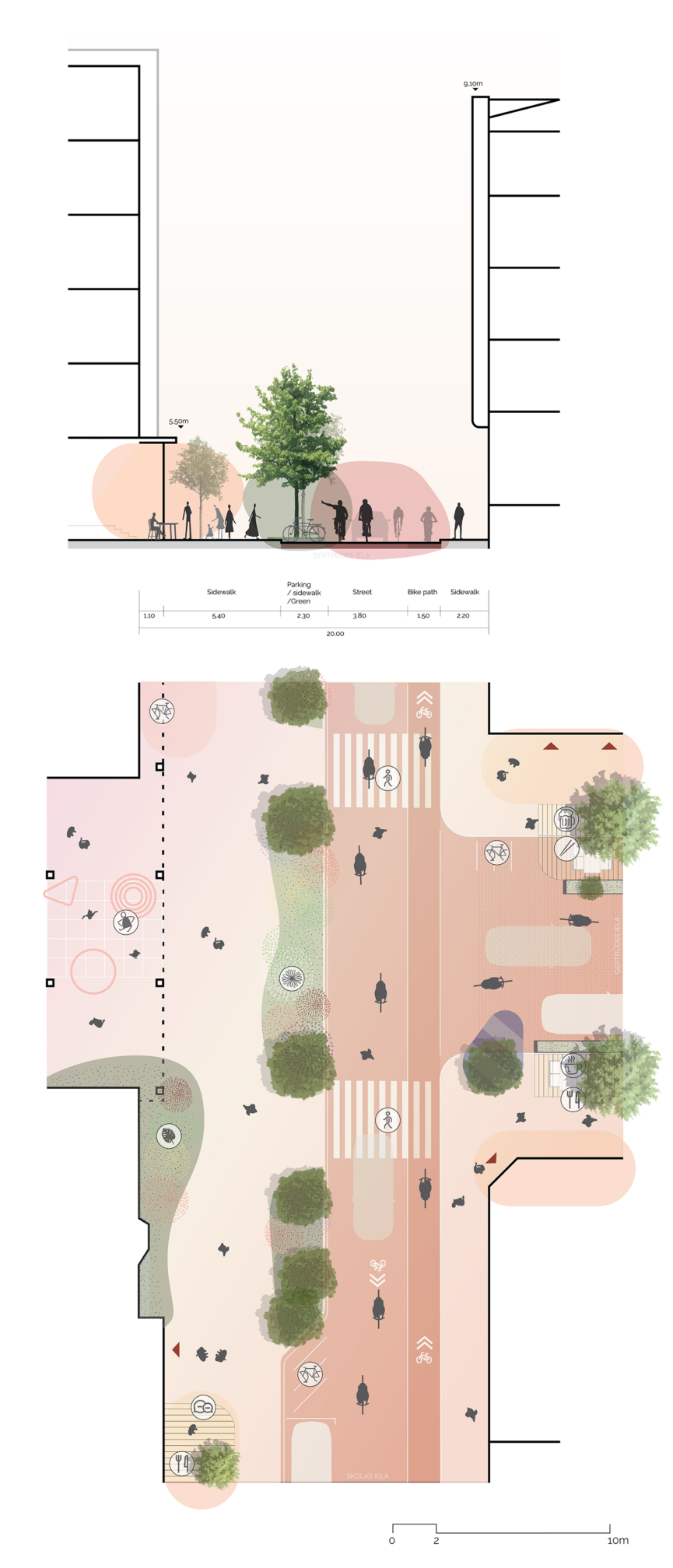
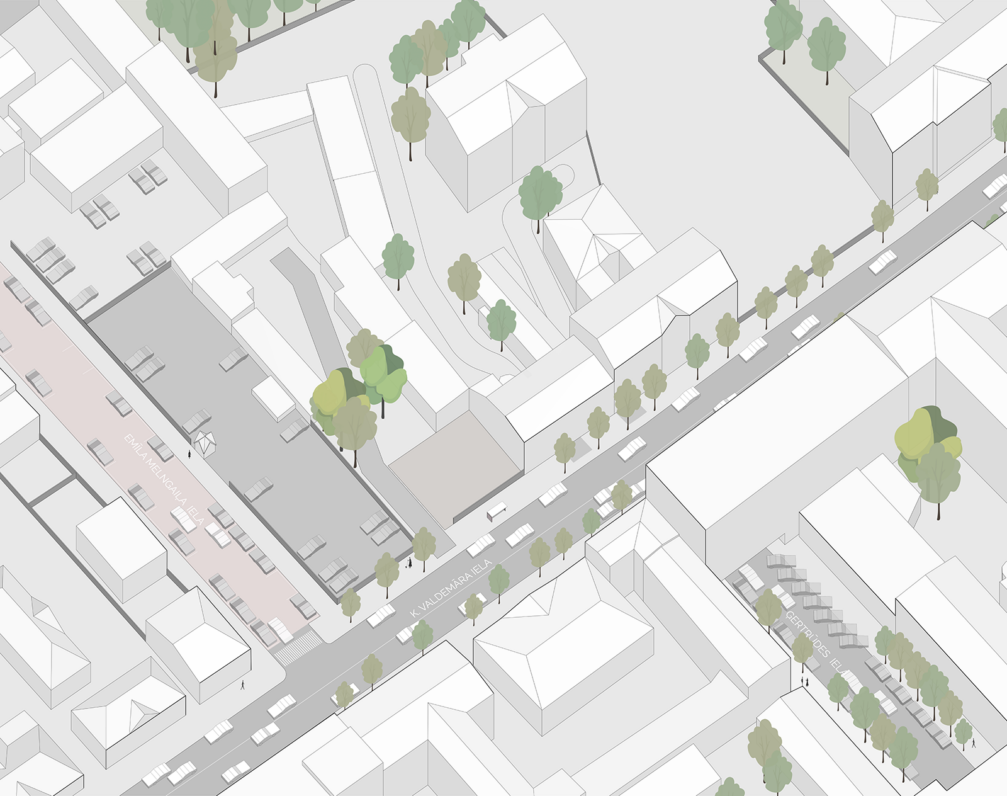
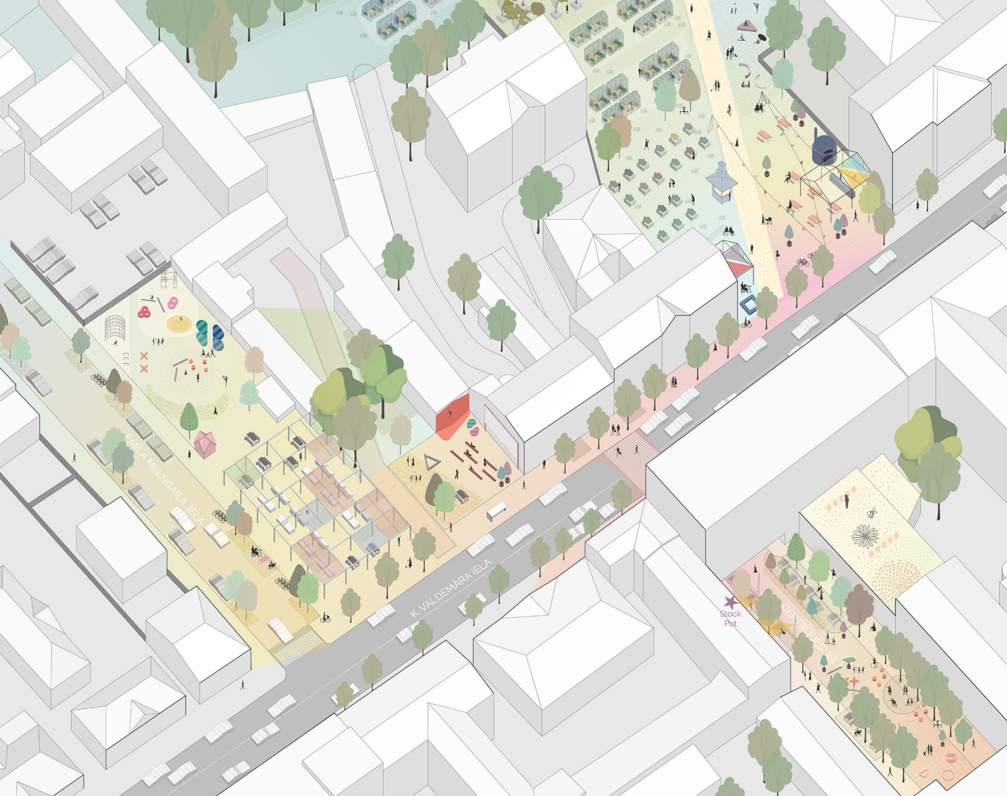
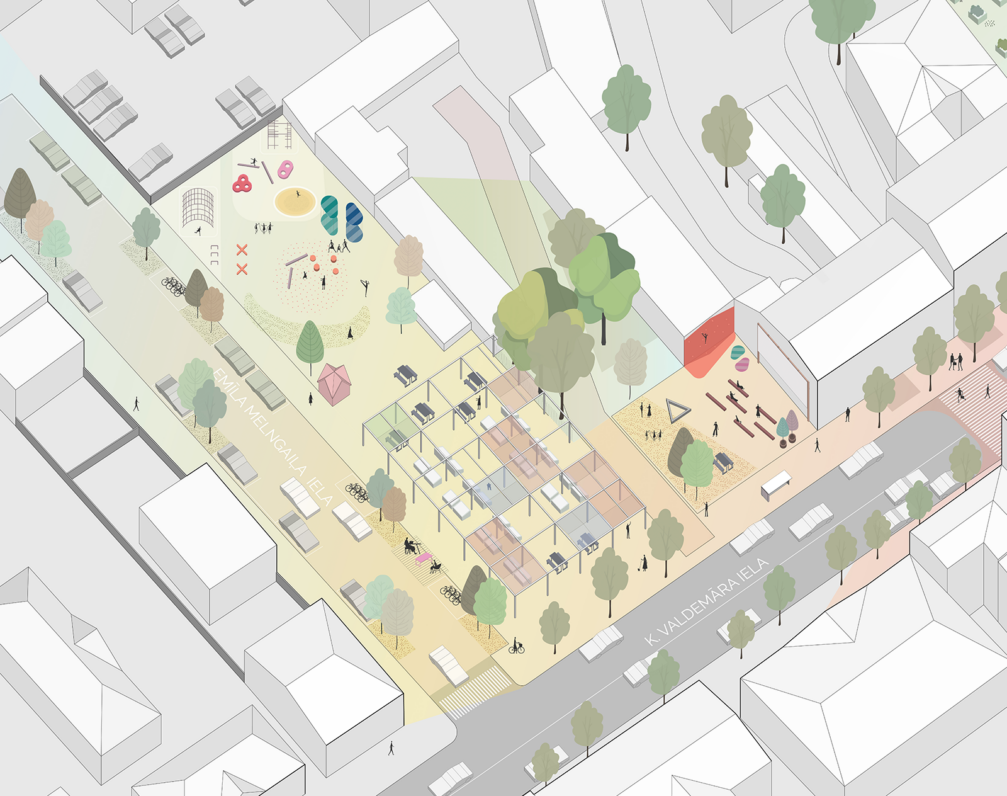
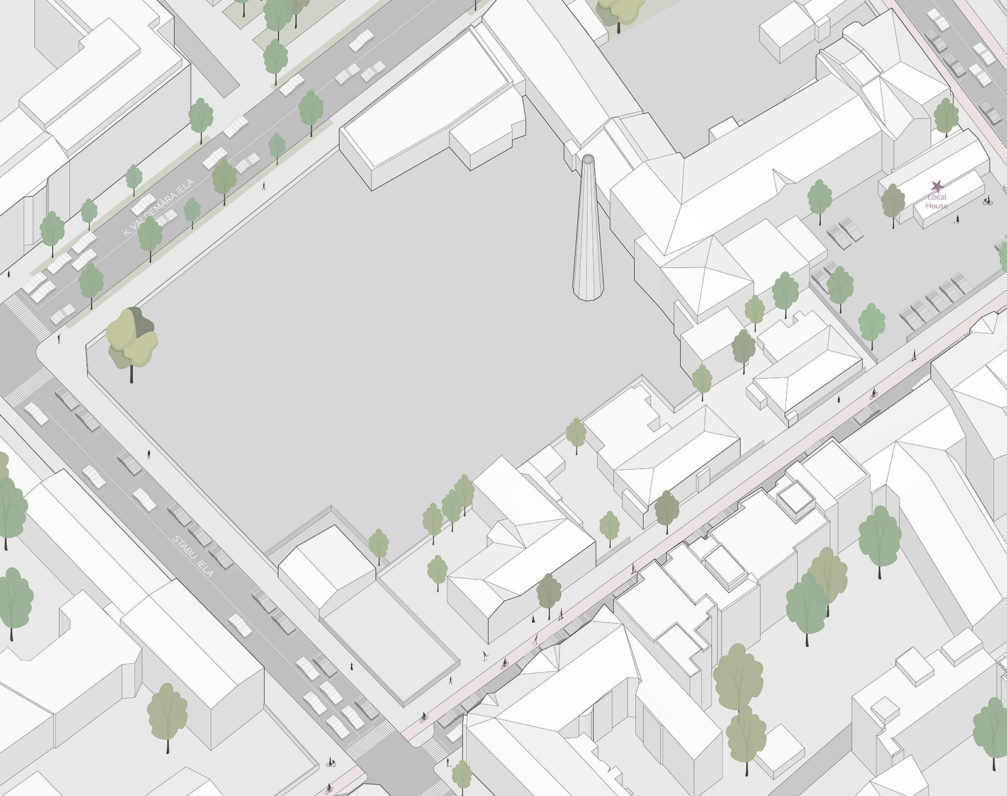
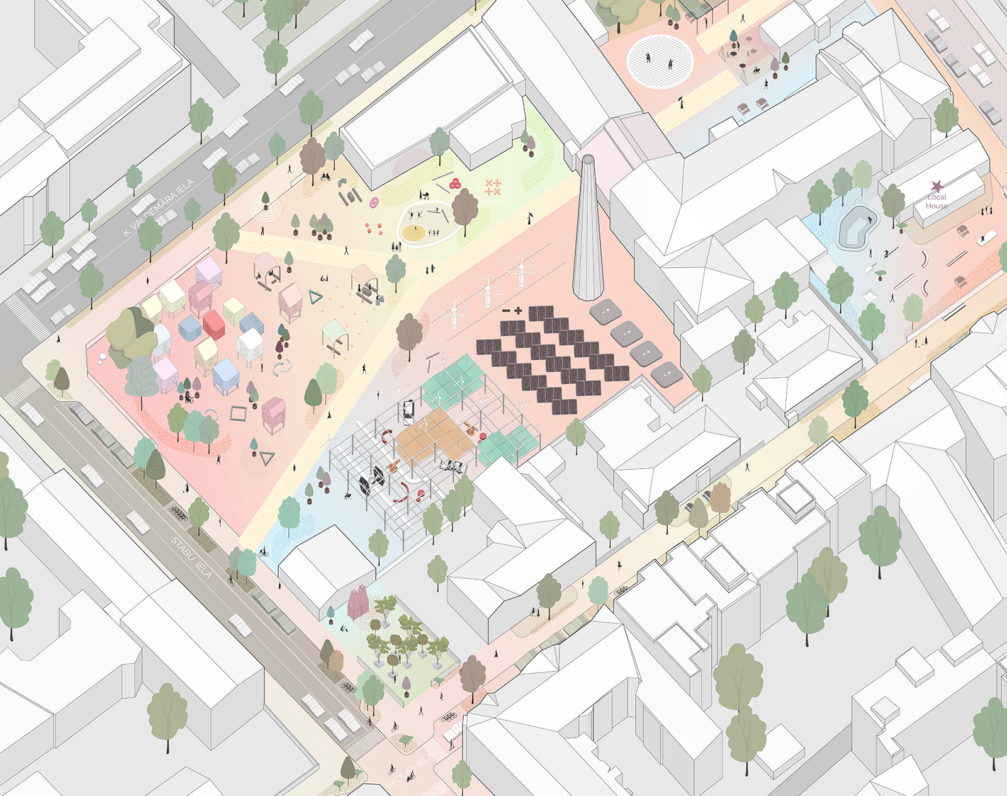
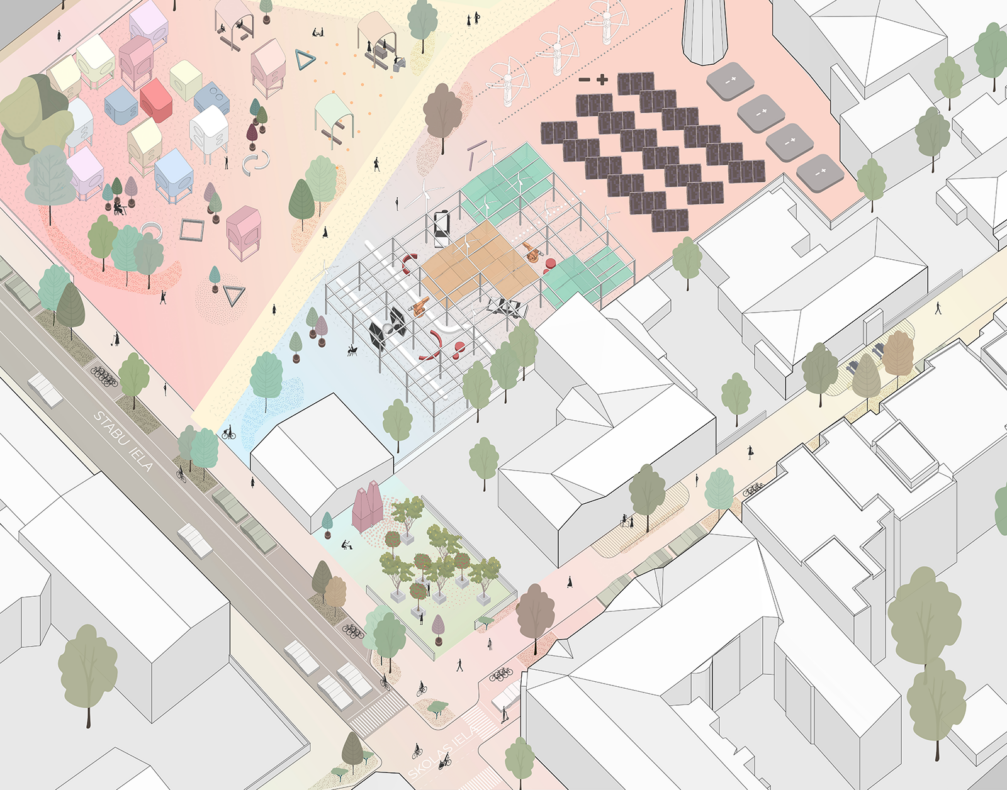
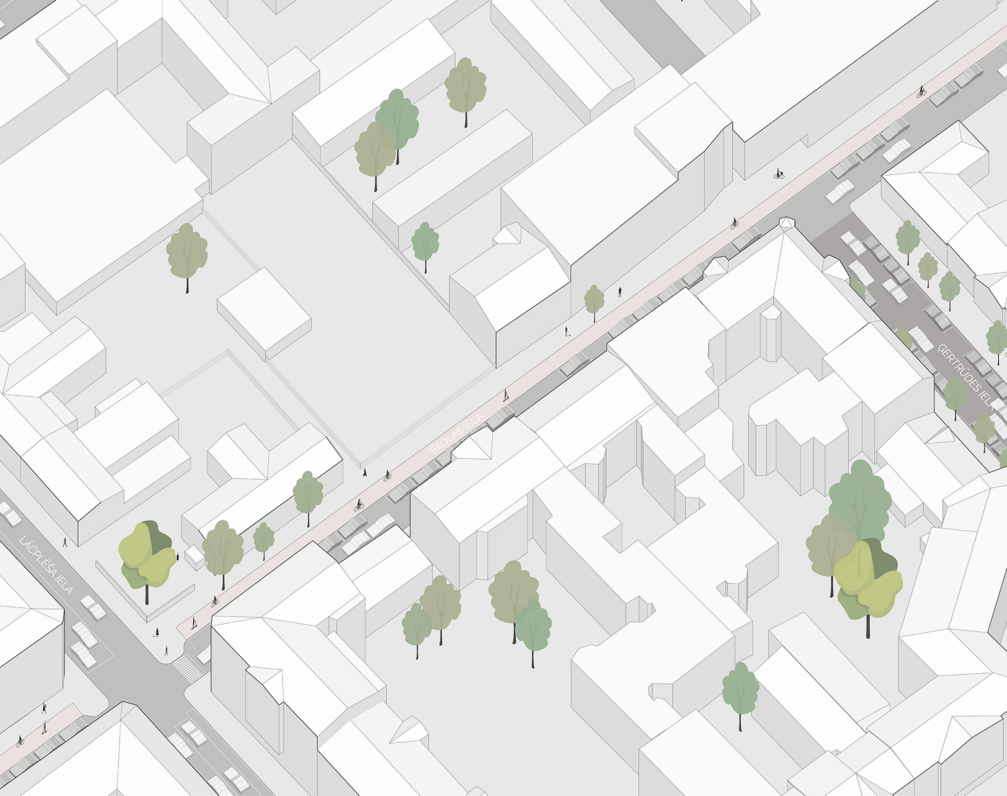
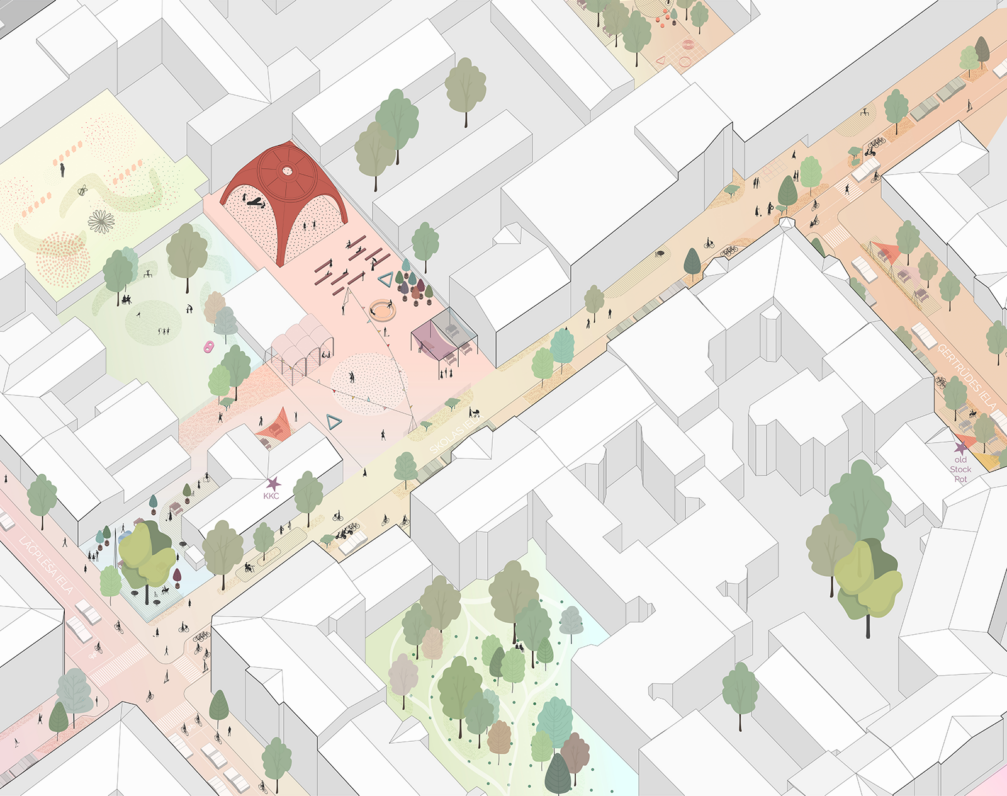
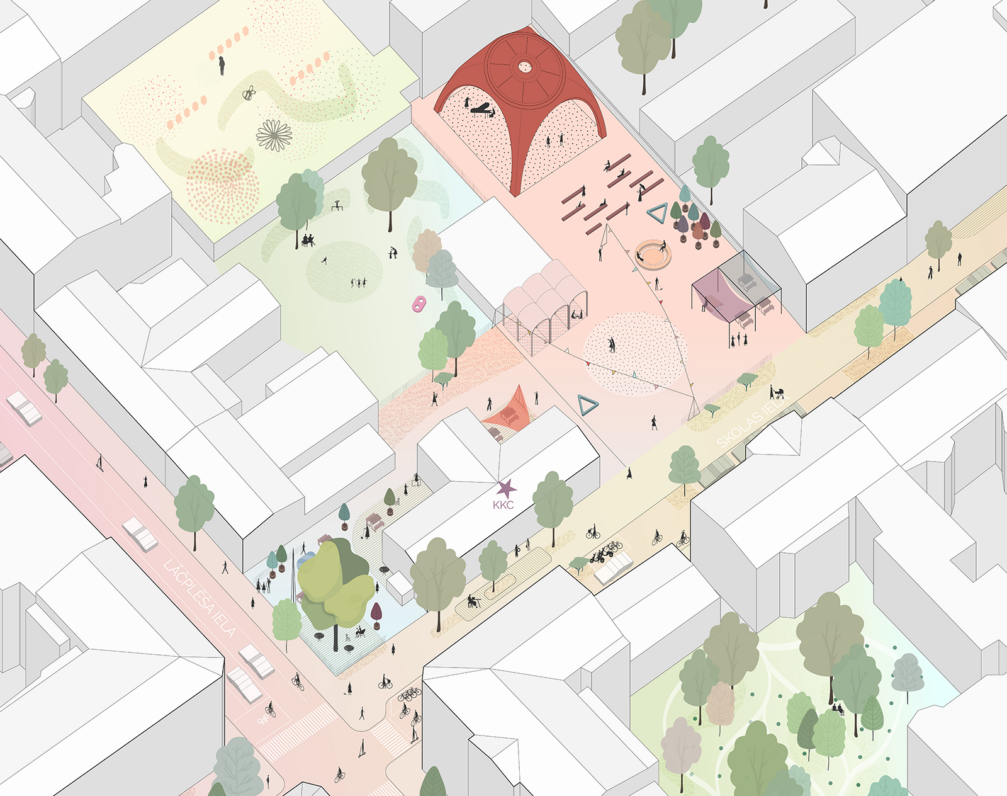

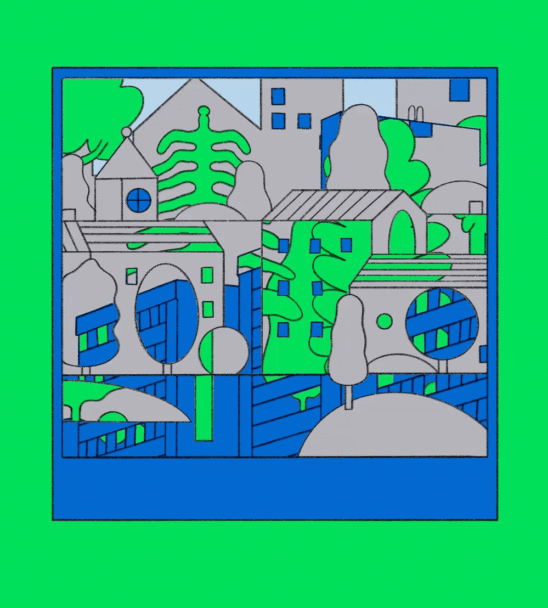
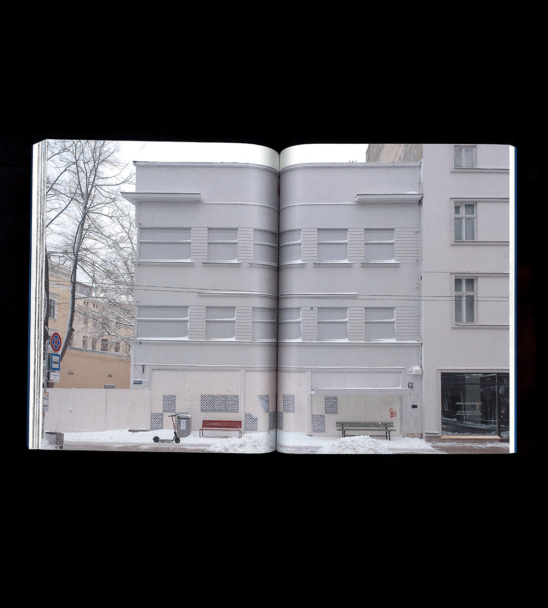
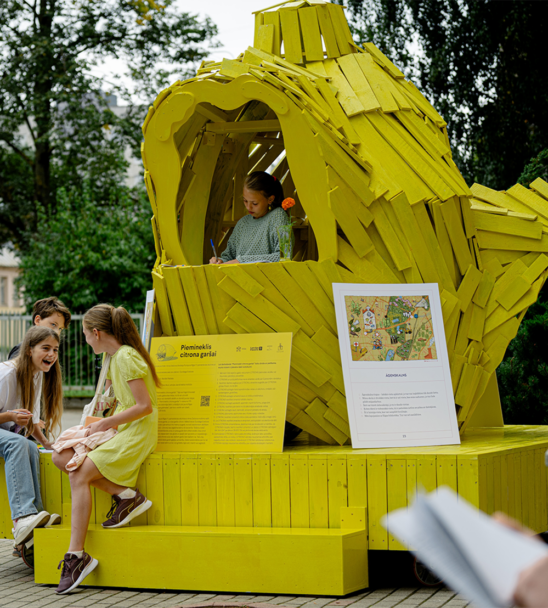
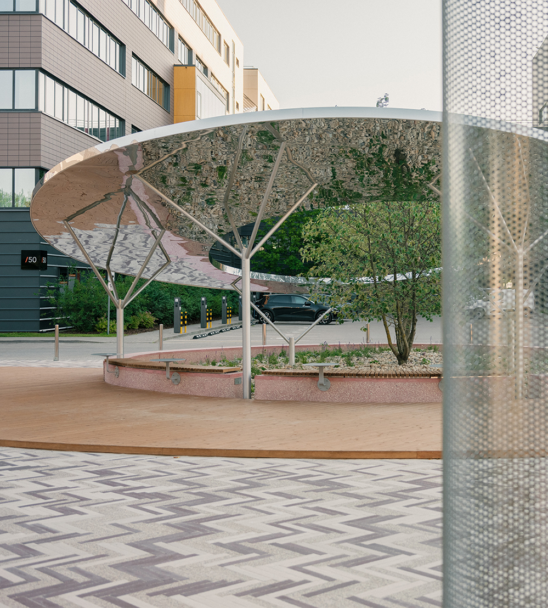
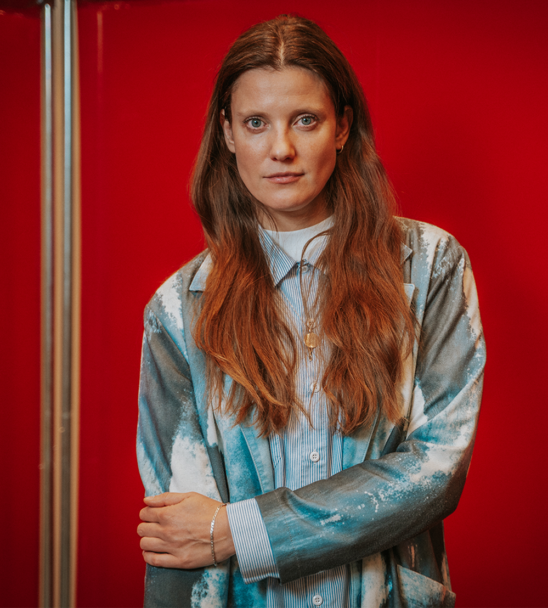
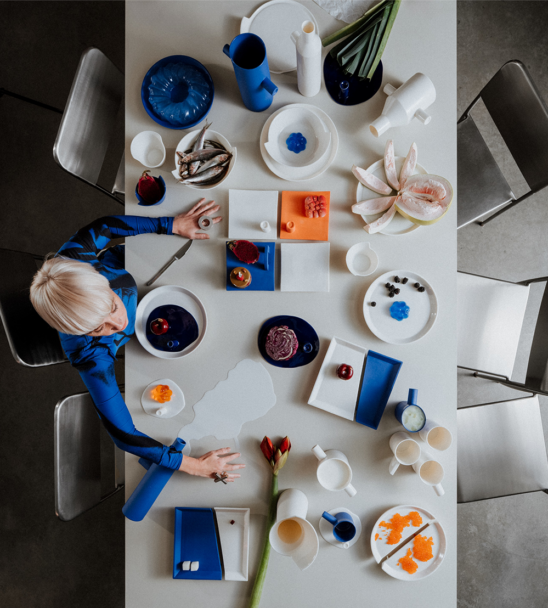
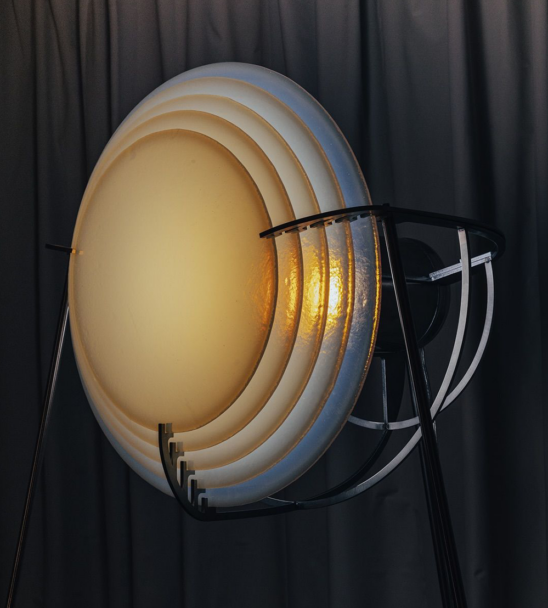
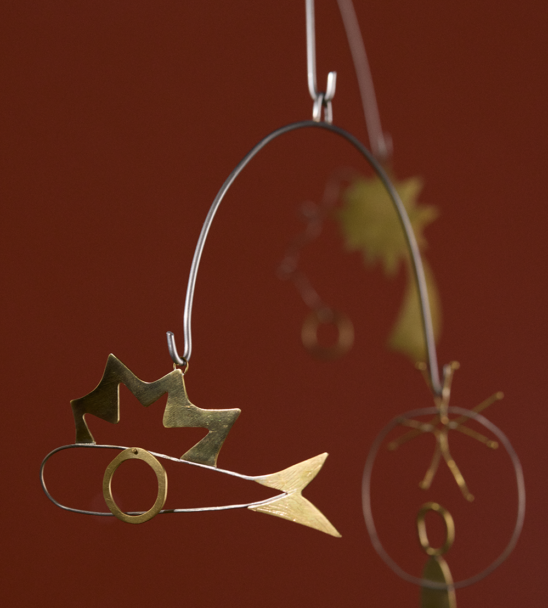
Viedokļi